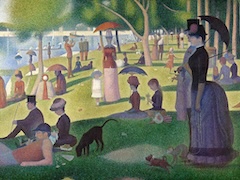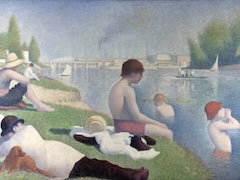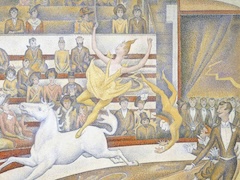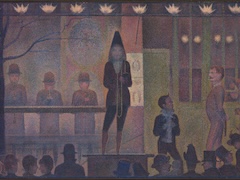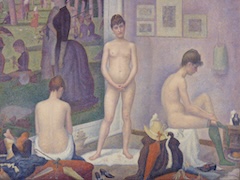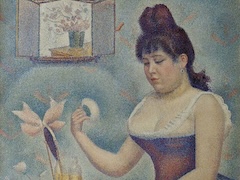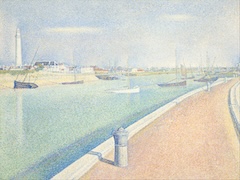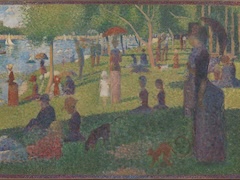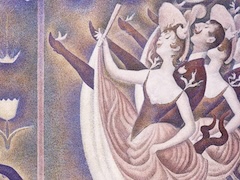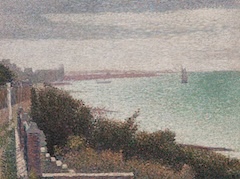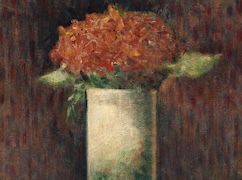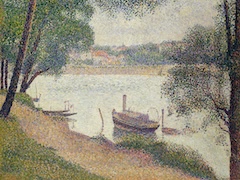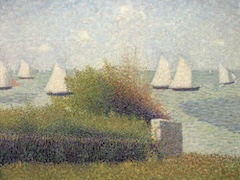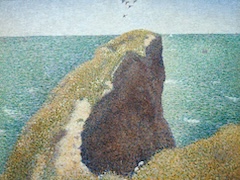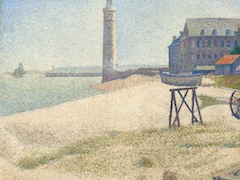The Channel at Gravelines by Georges Seurat
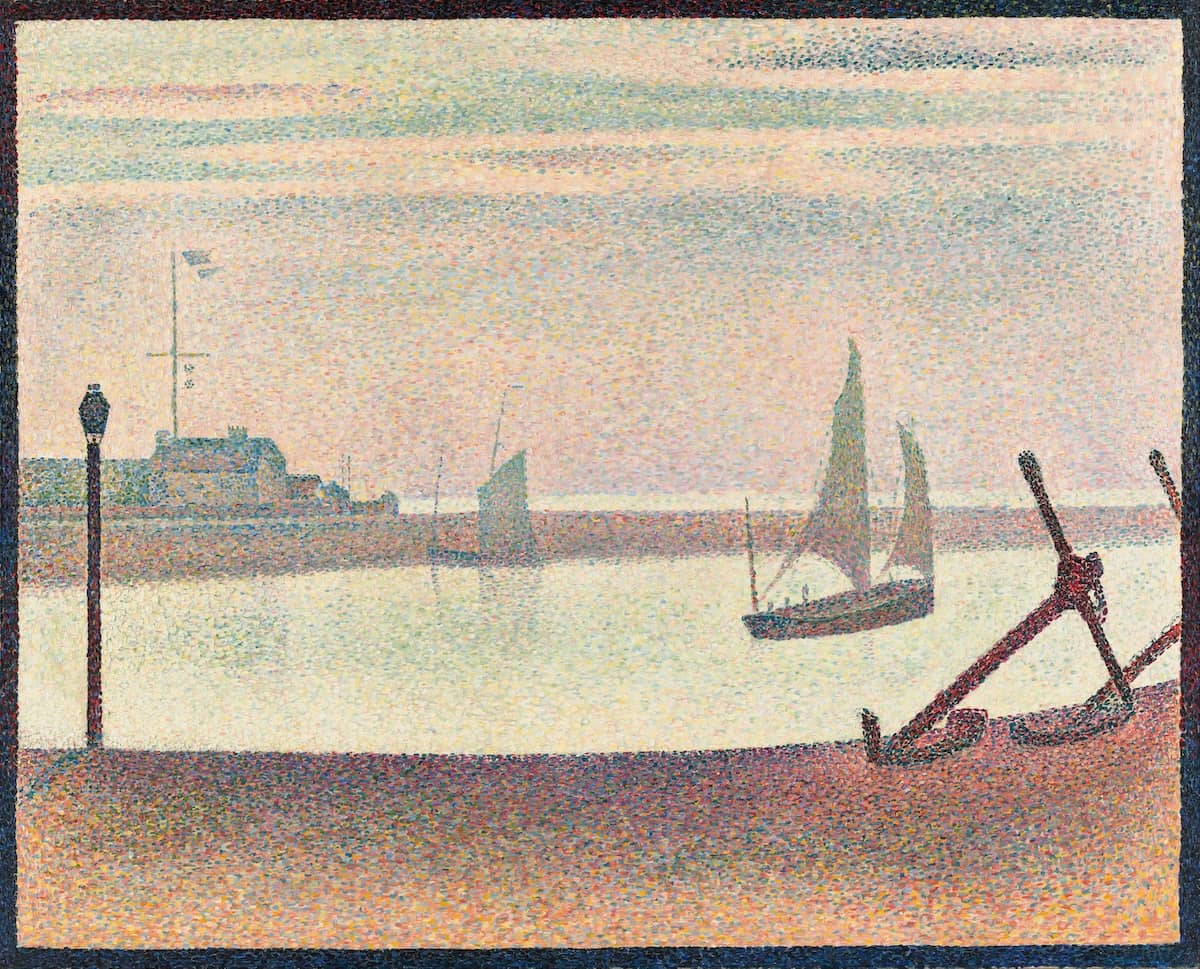
This late work (it was exhibited at the Indépendants with The Circus in 1891) may be looked upon as Seurat's last will and testament so far as landscape is concerned. What silence, what peace these forms, simplified by the approach of night, suggest! At left, the lamppost reminds us of Seurat's fondness for the vertical. In the channel we are slipping away into the somnolence that comes at dusk after a day's sailing.
This is peace, the calm after a storm. In the sky, clouds fringed by one last glow are moving slowly and dissolving gradually into the vast dark. But what endows the canvas with such poetry are the anchors silhouetted at the right symbols of repose, of immobilization ( but not of immobility). The anchors suggest that the last of the daylight will shortly be snuffed out, that night is falling, that all things pass, and that our eyes will soon close in sleep.
For Seurat it will shortly be the last sleep, and this painting could almost have been a premonition.
A tremendous gift for synthesis was required to give form to such a great vision, to fill a canvas with so few elements, all concentrated in silhouette, with the dark accents of the lamppost and the anchors, which open up the painting to the vast space it encompasses.
The painting once had a wide, flat frame, which Seurat painted himself and which may have borne his signature, but it has since disappeared.

